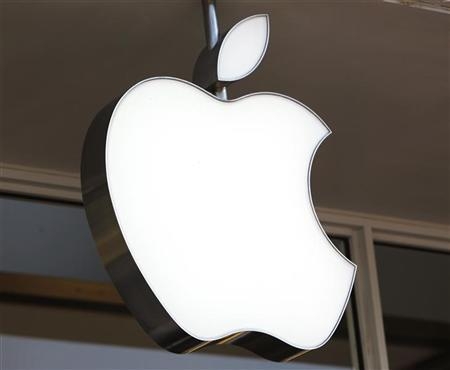
Not long after the iPhone came out, skeptics questioned how much appeal the costly device and related wireless service would have in countries like China with lower income levels. On Tuesday, Apple provided the answer: A lot.
 |
Not long after the iPhone came out, skeptics questioned how much appeal the costly device and related wireless service would have in countries like China with lower income levels. On Tuesday, Apple provided the answer: A lot.
The company reported Tuesday that soaring sales of the iPhone, especially in China, helped Apple nearly double its profit in the company’s fiscal second quarter.
Apple said it sold 35.1 million iPhones in the quarter, an 88 percent increase from the period a year ago. It sold 11.8 million iPads, more than double the number it sold in the same quarter last year.
“It was an incredible quarter in China,” Timothy D. Cook, Apple’s chief executive, said in a conference call with Wall Street analysts. “It is mind-boggling that we could do this well.”
For the quarter that ended March 31, the company reported net income of $11.62 billion, or $12.30 a share, compared with $5.99 billion, or $6.40 a share, in the period a year earlier.
Apple’s revenue was $39.19 billion, up from $24.67 billion a year ago.
Mr. Cook said that Apple’s quarterly revenue from China was $7.9 billion, about 20 percent of total company revenue. Furthermore, that was triple Apple’s China sales in the same period a year ago. In contrast, Apple’s China sales during its last fiscal year were about 12 percent of total revenue. Two years ago, Apple sales in China were 2 percent.
“China has grown from a rounding error to a massive new market,” said Robert Cihra, an analyst at Evercore Partners. “Their premium price point clearly has not been any hurdle to them growing there.”
Mr. Cook said that enormous numbers of people moving into the middle class in China were creating demand for goods including the iPhone. He said Apple was “doing everything” it could to serve the market. The iPhone 4S went on sale in China on Jan. 13, near the beginning of the last quarter, and starts at nearly $800 without a wireless plan, though it is available free with a multiyear carrier contract.
Since becoming chief executive of Apple last fall, Mr. Cook has repeatedly identified China as one of the biggest growth opportunities for Apple. The growing appetite for Apple’s products among Chinese consumers comes at a time when Apple is working with manufacturing partners and parts suppliers to improve working conditions in factories in countries like China, where most Apple products are made.
Apple executives also said demand for the newest version of the iPad, released by Apple last month, was outstripping supply of the product, leading to shortages. They said it remained their fastest-growing business and that Apple had sold 67 million of the device since the first model went on sale in 2010.
Mr. Cook said it took 24 years for Apple to sell an equivalent number of Macintosh computers. In the education market, one of the strongest for the Mac, Apple said it sold two iPads for every Apple computer. In one example, the San Diego school district bought 10,000 iPads during the last quarter, with plans to buy 15,000 more in the current quarter, according to Apple.
Apple previously told Wall Street to expect earnings of $8.50 a share and revenue of $32.5 billion for the quarter. But as they do nearly every quarter, analysts viewed Apple’s official figures as lowball estimates and came up with their own more bullish forecasts. On average, analysts surveyed by Thomson Reuters expected Apple to report earnings of $10.06 a share and revenue of $36.81 billion for the quarter.
Investors in Apple had grown increasingly skittish about Apple’s performance in the weeks before the earnings report, sending its shares down from a high of $636.23 on April 9 to $560.28 at the close of regular trading on Tuesday. Among their chief concerns were research data showing weak sales of the Macintosh computer and worries about whether iPhone sales could keep up their momentum.
But immediately after the results from Apple came out, its shares shot up nearly 7.4 percent in extended trading. Even after the jitters of the last several weeks, Apple’s shares are up 38 percent for the year and the company remains the world’s most highly valued company.
Some investors fear a repeat of a pattern from last year, when Apple said it lost some sales of the iPhone because of a steady escalation of rumors about the release of a new model. Those rumors were accurate; Apple announced the iPhone 4S in early October.
There is widespread speculation that Apple will again introduce a new version of the iPhone in the fall and that consumers might wait for its release so they can get the latest gadget. The iPhone has become an engine of Apple’s growth over the last two years, accounting for almost 40 percent of the company’s revenue during the quarter. Gene Munster, an analyst at Piper Jaffray, said a slowdown in iPhone sales in the months ahead of an expected fall or summer release of a new version remained likely.
“You can count on that,” said Mr. Munster.
As it does in most quarters, Apple again tempered expectations with analysts. In the company’s current quarter, Apple said it expected to report earnings of $8.68 a share and revenue of $34 billion.
The company also said its hoard of cash and cash equivalents rose to more than $110 billion. Apple has said it intends to slow the growth of its cash through investor dividends and share buybacks.
(Source: NYTimes)





